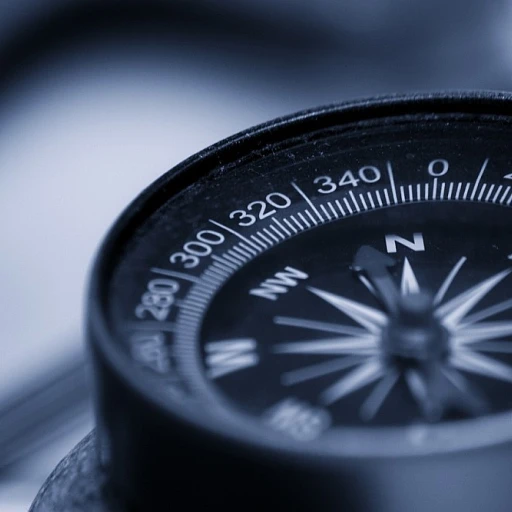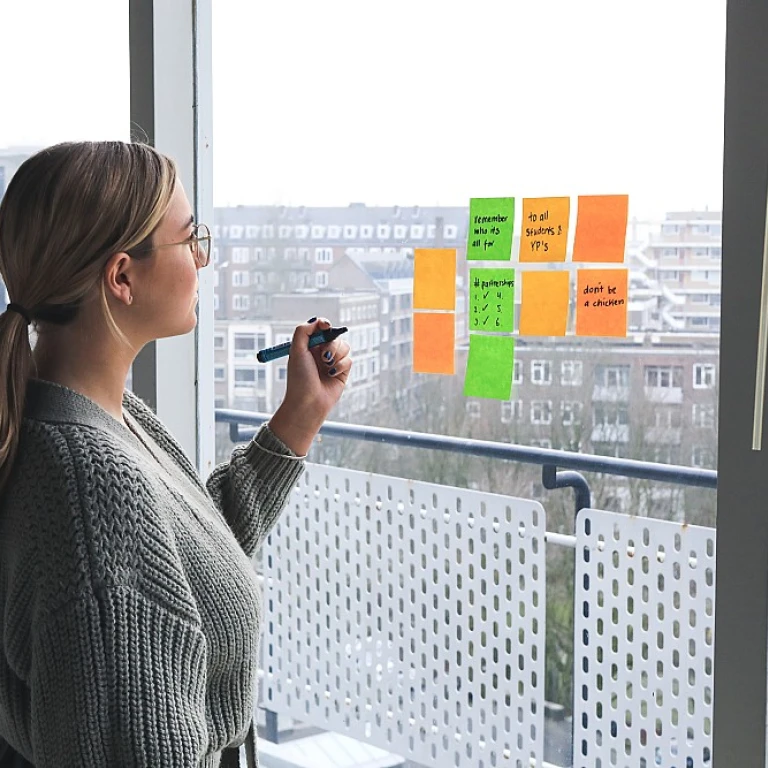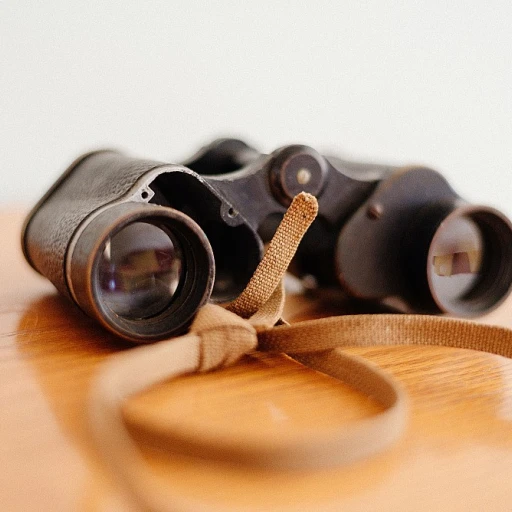
Understanding Procurement Capability Assessment
The Importance of Evaluating Procurement Capabilities
Understanding the intricacies of procurement capability assessment is essential for organizations aiming to optimize their supply chain processes. A comprehensive evaluation helps businesses pinpoint strengths and identify areas for improvement, thus driving strategic objectives. At the core, procurement capability involves a multifaceted approach that encapsulates various skills and competencies. As businesses strive for procurement transformation, the ability to accurately assess capabilities becomes pivotal. This process ensures that procurement functions are aligned with broader business objectives, supporting continuous improvement efforts. Capability assessment serves as a foundation for strategic sourcing initiatives. It enables firms to effectively manage supplier performance, ensuring that supplier capability aligns with the overall quality control and quality assurance standards. Moreover, a well-structured assessment helps companies navigate the intricacies of category management, risk management, and chain management, minimizing potential disruptions. The evaluation of procurement capabilities is not merely about identifying the current state. It is also about forecasting future requirements. By systematically assessing procurement processes, organizations can formulate a strategic plan to bridge any skills gaps, fostering robust procurement capabilities. As part of best practices, organizations should engage in regular gap analysis to keep pace with evolving supply chain demands. To gain deeper insights into the significance of procurement capability assessment, explore how a skills inventory can be an invaluable tool in this journey. Understanding the Importance of a Skills Inventory provides further context on harnessing skills data for transformational impact.Identifying Key Skills in Procurement
Pinpointing Essential Proficiencies
In the realm of procurement, identifying key skills is paramount for effective capability assessment. Procurement functions require a mix of technical, analytical, and strategic skills to ensure robust supplier management and to maintain a smooth supply chain. As companies strive for procurement transformation, the demand for certain skills like strategic sourcing, risk management, and continuous improvement becomes even more critical.
When conducting a capability assessment, one should focus on these pivotal skills:
- Supplier Capability and Quality Assurance: Assessing the quality and performance of suppliers to ensure they meet the organization’s standards.
- Strategic Sourcing: Developing and implementing effective sourcing strategies to optimize costs and minimize risks.
- Risk Management: Identifying and mitigating potential risks in the supply process to ensure resilience.
- Data-Driven Decision Making: Utilizing data analytics to inform business strategies and improve procurement outcomes.
- Cross-Functional Collaboration: Working seamlessly across different departments to enhance chain management processes.
Incorporating a structured approach for the procurement process involves establishing clear roles and responsibilities and adopting best practices to foster capability development. Understanding the intricacies of these skills not only supports improved procurement capabilities but also enhances overall supplier performance.
To further delve into key attributes that define a proficient professional in this field, consider exploring essential questions to ask your interviewee for skill assessment to gain deeper insights into competency areas.
Challenges in Assessing Procurement Skills
The Complexity of Assessment in Procurement
In the realm of procurement, identifying and assessing key skills is a crucial step. However, it is not devoid of challenges. The dynamic environment of procurement, with its multifaceted supplier networks and complex supply chain channels, often complicates the capability assessment process. Procurement functions must navigate a range of factors when conducting such assessments. This includes evaluating capability development across the supply chain while ensuring supplier performance aligns with strategic sourcing goals. The intricate nature of supplier capability and procurement capability assessments necessitates thorough planning and execution. One significant challenge lies in cross-functional collaboration needed for comprehensive capability evaluations. Procurement teams often need to work alongside various departments to gather data that supports their assessment process. This collaboration is essential to ensure that the procurement business capabilities align with overall company objectives. Moreover, assessing procurement capabilities involves not only current performance but also potential. Procurement transformation and continuous improvement efforts, such as introducing quality assurance measures or enhancing procurement process efficiency, are part of this ongoing assessment. Another layer of complexity is added by risk management and quality control practices. Companies must identify gaps not only in procurement skills but also in supplier quality control measures and category management strategies. This is essential for maintaining both the quality and reliability of the supply chain. For businesses aiming to enhance their procurement function, executing a meticulous supplier capability assessment is crucial—particularly in strategic categories where suppliers' quality and performance can impact the company's competitive edge. To further understand how to identify skills gaps within your organization, you can explore insightful strategies by visiting this comprehensive guide on assessing competency Enhancing Workforce Competency: A Guide to Benchmarking Talent.Tools and Techniques for Effective Assessment
Effective Methods to Evaluate Procurement Abilities
Gaining a comprehensive understanding of procurement capabilities within an organization requires a strategic approach. With an array of tools and techniques available, procurement leaders can effectively gauge competencies and usher in better performance standards across the supply chain.Data-Driven Assessment Practices
Incorporating data is crucial for precise capability assessments. Leveraging analytics, procurement teams can identify patterns and gaps within supplier performance and the overall procurement process. By analyzing quality control and strategic sourcing activities, organizations can pinpoint areas that require improvement and implement measures for continuous enhancement.Strategic Sourcing and Supplier Evaluation
Another valuable technique involves evaluating strategic sourcing processes and supplier capabilities. This evaluation enables businesses to assess supply capabilities in relation to company goals, ensuring alignment with procurement transformation strategies. Evaluating suppliers not only improves quality assurance but also supports cross-functional processes that enhance the procurement function.Capability Development Framework
Utilizing a capability development framework offers a structured process for advancing supplier performance and overall procurement capabilities. Organizations can plan effectively by identifying skills gaps through comprehensive gap analysis. This leads to the creation of tailored development programs, promoting advanced skills within the procurement team.Role of Technology and Best Practices
Adopting technological tools such as procurement management systems plays a vital role in effective capability assessment. These tools support risk management and strategic planning initiatives by providing real-time data and insights. Additionally, companies can adopt best practices from industry leaders, ensuring continuous improvement in procurement processes. These tools and techniques collectively reinforce procurement transformation and set the foundation for bridging skills gaps. They also facilitate the identification of areas requiring enhancement, ensuring procurement teams are better equipped to support business objectives and achieve supply chain excellence.Bridging the Skills Gap in Procurement
Bridging the Procurement Skills Deficit
Identifying and bridging the skills gap in procurement is crucial for enhancing the procurement function's effectiveness. The capability assessment conducted serves as a foundation, enabling organizations to pinpoint specific areas requiring improvement. Here are some methods to address these gaps and enhance procurement capabilities:- Implement Continuous Improvement Initiatives: Procurement teams should engage in ongoing training and professional development to stay abreast of industry trends and best practices. This helps foster continuous improvement in strategic sourcing and supply chain management.
- Adopt Strategic Sourcing Practices: This involves more than just reducing costs. It requires understanding supplier capabilities and employing processes that align with strategic business objectives. Implementing a strategic sourcing plan aids in better supplier performance and quality assurance.
- Enhance Supplier Management: Effective supplier and risk management processes support improved supplier capability and performance. This entails regular supplier assessments and quality control checks to ensure alignment with procurement objectives.
- Utilize Cross-Functional Collaboration: Encourage collaboration across various business functions to identify and address competency gaps. This helps facilitate improvements in procurement processes and overall chain management.
- Leverage Data-Driven Assessments: Use data to conduct a gap analysis and identify areas for improvement. Data-driven insights enable informed decision-making and aid in capability development.
- Develop Capability Plans: Formulate comprehensive plans to improve procurement capabilities. This should include setting measurable goals and implementing scalable processes to support continuous capability enhancement.
- Monitor Future Trends: Stay updated on industry developments to anticipate emerging skill requirements. This forward-looking approach ensures that the procurement function evolves alongside changes in market demands.












